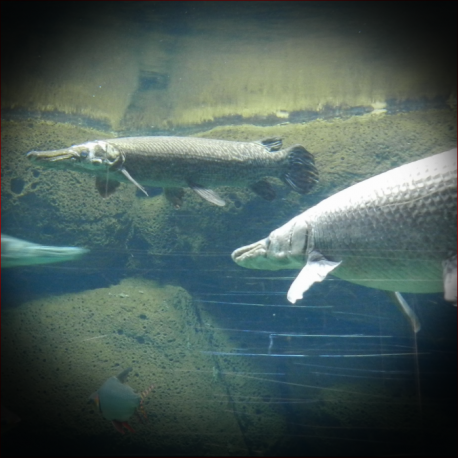More info
Datasheet
| Minimum Tank Size | 10000 litres / 2641.72 US gallons |
| Maximum Size | 305.0cm / 120.08inches |
| Temperature | 11°C / 51.80°F - 23°C / 73.40°F |
| Hardness | 5.04dgH / 90ppm - 25.04dgH / 447ppm |
| pH | 6.0-8.0 |
General Description
The Alligator Gar, categorized under Lepisosteiformes, is known for being one of the largest freshwater fish globally, with a maximum size of 305.0cm. It possesses a unique vascularized swim bladder that enables it to breathe atmospheric air partially. This species, Atractosteus Spatula, is a primitive fish that shouldn't be kept in home aquariums due to its size and longevity, often exceeding 50 years. Hybridized gars, like the 'crocodile gar,' can also be found in the trade.
Aquarium Setup
For an Alligator Gar, a minimum tank size of 10000 liters is recommended. The tank should have subdued lighting and moderate water flow. Water conditions should maintain a pH range of 6.0-8.0, hardness between 90-447ppm, and a temperature of 11-23°C (see table).
Behaviour
Alligator Gars are best housed alone or with similarly sized, non-aggressive fish that cannot fit into their mouths. They are ambush predators, primarily feeding on smaller fishes and aquatic crustaceans. They may initially resist dead foods in captivity but can be transitioned with patience. Feeding frequency decreases with age, with adults requiring one or two meals a week. Live feeder fishes should be a last resort due to disease risks.
Feeding and Diet
In their natural habitat, Alligator Gars are ambush predators known to prey on smaller fishes and aquatic crustaceans. Captive individuals may need time to adapt to dead foods but can eventually consume meaty frozen options like prawns and lancefish. Larger specimens can be offered whole fish such as trout or sprats. Feeding should be daily for juveniles but decrease as they grow.
Reproduction & Dimorphism
Alligator Gars are not typically bred in captivity. In the wild, they spawn in temporarily-inundated areas during spring, with females laying eggs among submerged vegetation. The eggs are toxic to crustaceans and other vertebrates. Growth is rapid during the initial phase, with juveniles reaching 250-300 mm in the first year. While unconfirmed, females are believed to grow larger than males.
Habitat and Distribution
These gars are found in various habitats ranging from large lakes and rivers to slower tributaries and backwaters. They are adaptable to both fresh and brackish waters but prefer large rivers with extensive floodplains. Their distribution spans from the central and southeastern US to northern and central Mexico, favoring regions like the lower Mississippi River basin and Gulf Coast states, extending to Veracruz in Mexico.

